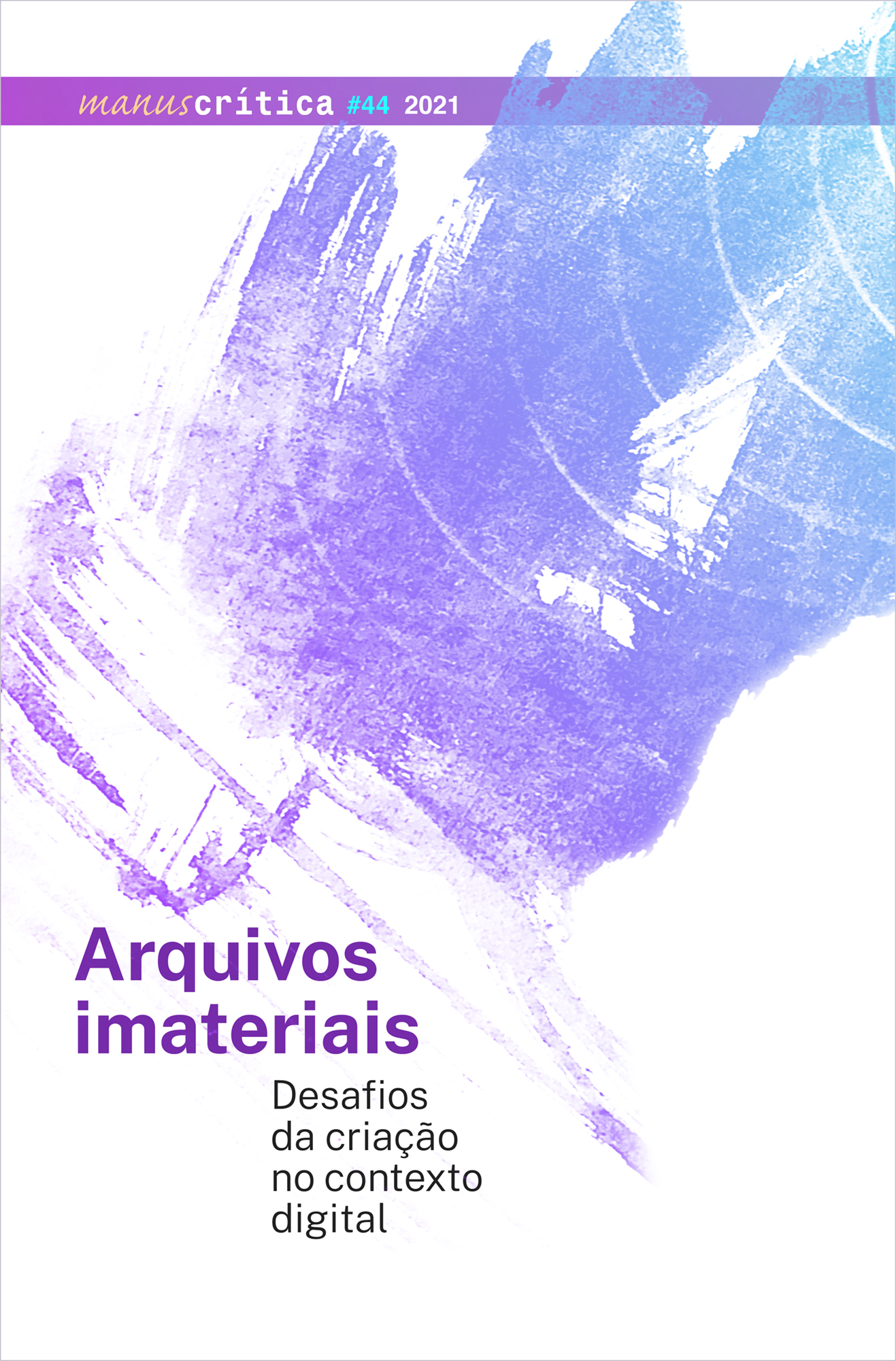Artificial Intelligence applied to artistic creation: the emergence of the new craftsman
DOI:
https://doi.org/10.11606/issn.2596-2477.i44p68-81Keywords:
art and artificial intelligence, art and technology, art theory, art criticism, playformAbstract
The imminence of techno-scientific developments observed especially since the 1960s have broadened the ways in which artists can express themselves, mainly through the adoption of and collaboration with intelligent interfaces, which increasingly assimilate human qualities and are capable of supporting creativity. From this scenario arises the man-machine engagement, which blurs the artistic practice and materializes itself in hybridization - a symbiosis that adopts the body as a metaphor to symbolize complex systems of distinct natures, organic and inorganic. Based on the understanding of the need to reflect on artistic creativity in the artificial dimension, experienced in a dynamic of co-creation, the article will highlight some characteristics of a scenario in which the generation of artificialized works implies the adoption of anthropomorphized discourses capable of assimilating the metamorphosis that symbolizes both a new generation of technical images and a new moment for art and science. The analysis is built upon the notions of technical image (FLUSSER), incorporates the thought of systems as bodies (ZUANON), and briefly presents the notions of embodiment, emotion and, sociality (SUCHMAN) as elements to think about the next steps of creation assisted by intelligent interfaces. The creation platform Playform contributes to the construction of the narrative.
Downloads
References
ASCOTT, R.; SHANKEN, E. Telematic Embrace: Visionary Theories Of Art, Technology, And Consciousness. Berkeley: University Of California Press, 2003.
BENSE, M. Cybernetic Serendipity. The Magazine Of The Institute Of Contemporary Arts, [S. L.], V. 6, N. 2, 1968.
BOSTROM, N. Superinteligência: Caminhos, Perigos, Estratégias. Rio De Janeiro: Darkside, 2018
BROWNLEE, J. A Gentle Introduction To Generative Adversarial Networks (GANS). Disponível em: <https://Bit.Ly/3lvy0np>. Acesso em: 24/04/2021.
COUCHOT, E. A Tecnologia Na Arte: Da Fotografia À Realidade Virtual. Porto Alegre: Editora Da Ufrgs, 2003.
COUCHOT, E. A Natureza Da Arte: O Que As Ciências Cognitivas Revelam Sobre O Prazer Estético. São Paulo: Editora Unesp, 2019.
ELGAMMAL, A.; MAZZONE, M. Artists, Artificial Intelligence And Machine-Based Creativity In Playform. Artnodes, [S. L.], N. 26, 2020. Disponível em: <https://Doi.Org/10.7238/A.V0i26.3366>. Acesso em: 11/05/2021.
FLUSSER, V. O Universo Das Imagens Técnicas: Elogio Da Superficialidade. 1. Ed. São Paulo: Annablume, 2008.
FLUSSER, V. Filosofia Da Caixa Preta: Ensaios Para Uma Futura Filosofia Da Fotografia. São Paulo: Annablume, 2011.
GALANTER, P. What Is Generative Art? Complexity Theory As A Context For Art Theory. In: 6th International Conference, Exhibition And Performances On Generative Art And Design. 2003. Disponível em: <https://Bit.Ly/3hevyey>. Acesso em: 15/09/2021.
GIANNETTI, C. Estética Digital: Sintopia Da Arte, A Ciência E A Tecnologia. Belo Horizonte: C/Arte, 2006.
GOODFELLOW, I. Et Al. Generative Adversarial Nets. 2014. Disponível em: <https://Arxiv.Org/Abs/1406.2661>. Acesso em: 01/05/2021.
HAUGELAND, J. Artificial Intelligence: The Very Idea. Massachusetts: Mit Press, 1985.
IRVIN, S. Appropriation And Authorship In Contemporary Art. In: British Journal Of Aesthetics, Vol. 45, No. 2. 2005, P. 127.
MARSHALL, P.; HORNECKER, E. Theories Of Embodiment In Hci. In: Price, S.; Jewitt, C.; BROWN, B. (Org.). The Sage Handbook Of Digital Technology Research. Londres: Sage Publications, 2013.
PICARD, R. Affective Computing: Challenges. International Journal Of Human-Computer Studies. Londres, V. 59, P. 55-64, 2003. Disponível em: <https://Doi.Org/10.1016/S1071-5819(03)00052-1>. Acesso em: 08/09/2021.
REICHARDT, J. Computer Art. In: REICHARDT, J. Cybernetic Serendipity: The Computer And The Arts. Londres: Studio International, 1968, P. 71.
SUCHMAN, L. Human-Machine Reconfigurations Plans And Situated Actions. Cambridge: Cambridge Univ. Press, 2007.
WOOD, P. Arte Conceitual. São Paulo: Cosac & Naify, 2004
ZUANON, R. Computador Vestível Afetivo Co-Evolutivo: Processos De Comunicação Entre Corpos Biológico e Tecnológico. Tese. Programa De Doutorado Em Comunicação E Semiótica, Pontifícia Universidade Católica De São Paulo, 2007.
ZUANON, R. Biointerfaces Inteligentes: Transdisciplinaridade E Transversalidade Em Arte-Arquitetura-Design-Ciência-Tecnologia. In: Celeste, H. Et Al. (Org.). Transdisciplinaridade Nas Ciências E Nas Artes. Santa Maria: Editora Ppgart, 2020.
HUI, Y. Tecnodiversidade. São Paulo: Ubu Editora, 2020.
Downloads
Published
Issue
Section
License
Copyright (c) 2021 Erik Nardini Medina, Mauricius Martins Farina

This work is licensed under a Creative Commons Attribution 4.0 International License.











